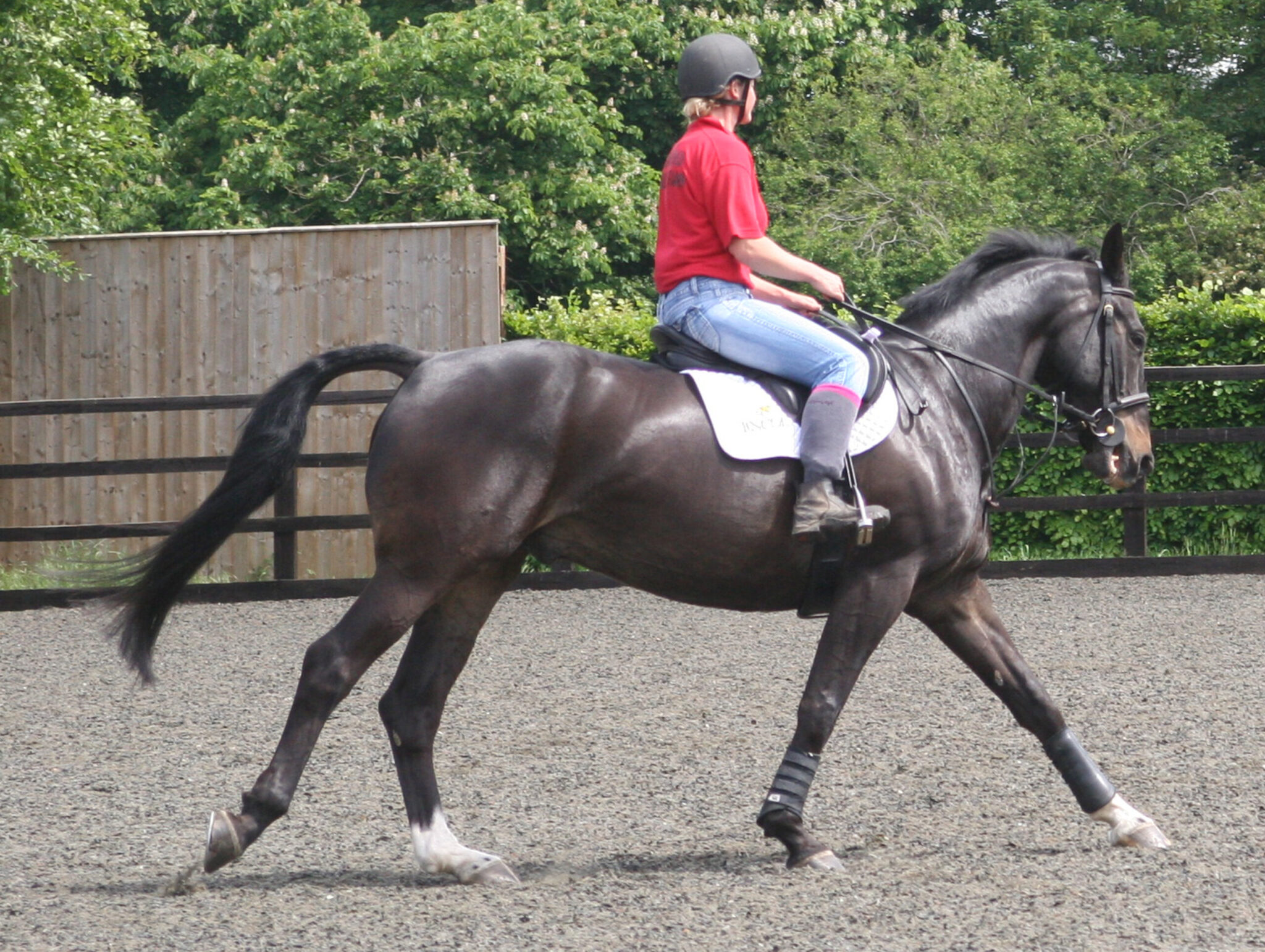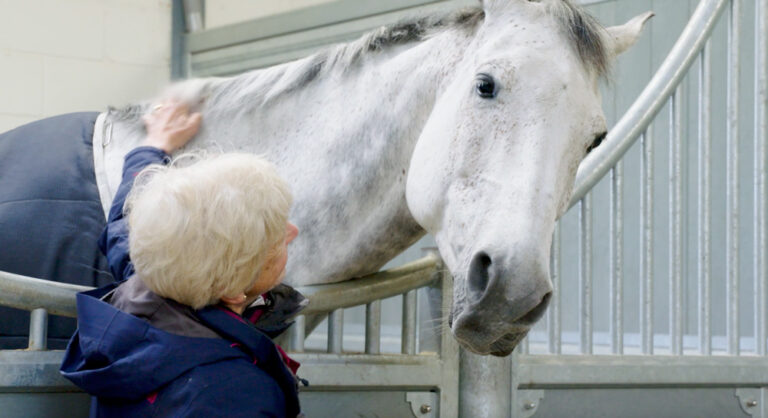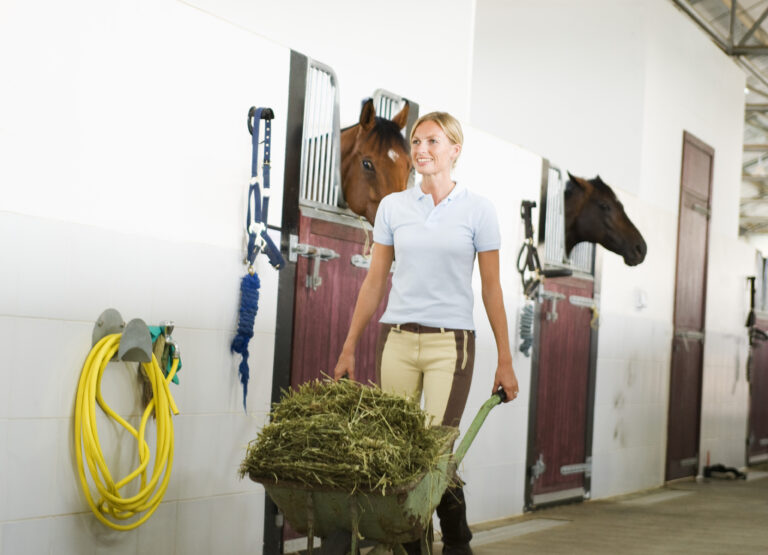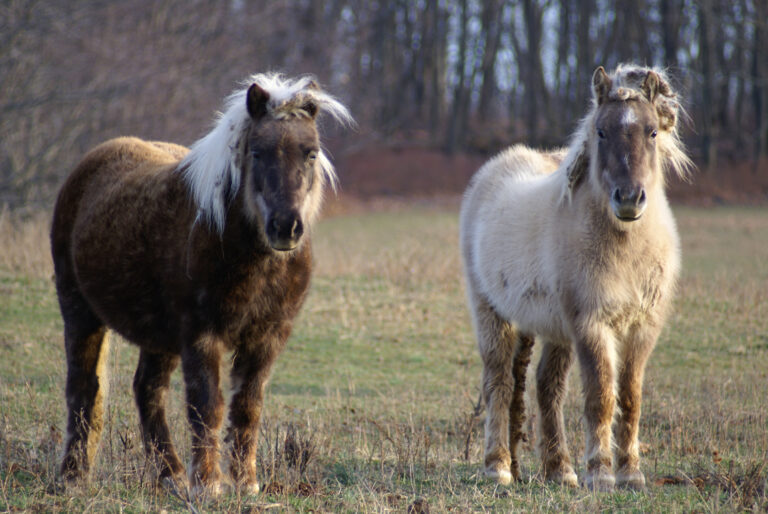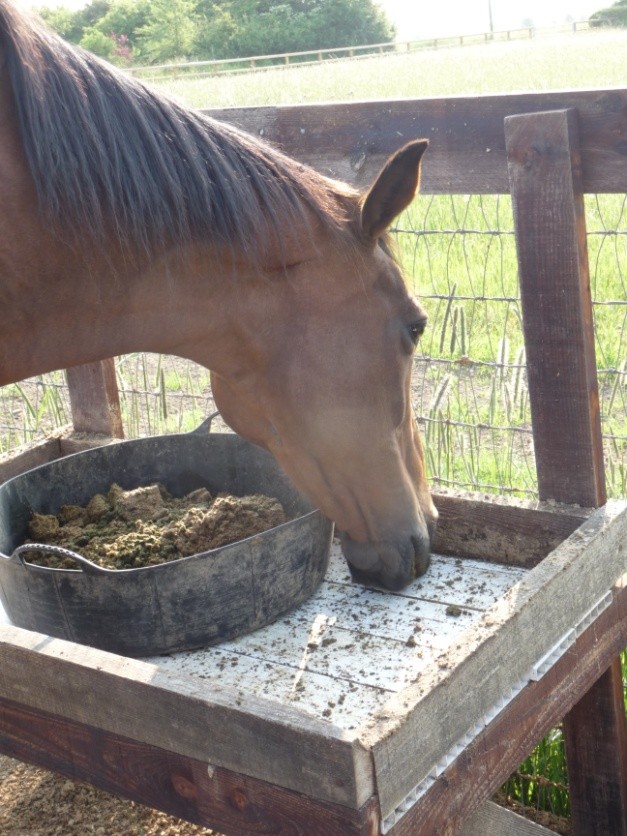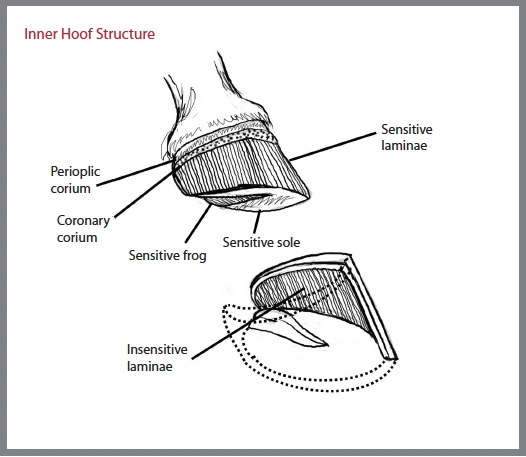In a previous article, we discussed the 24 behaviors included in the Ridden Horse Performance Checklist. There are additional pain signs in ridden horses, however, that should be aware of. These physical signs and behaviors that might indicate a horse is uncomfortable during ridden exercise.
Respiration Rate and Noises
A horse that has musculoskeletal pain might have an abnormally high respiratory rate. This would be an abnormal behavior relative to the horse’s fitness, the work intensity, or the environmental conditions (temperature and humidity). There could be a delayed recovery of resting respiratory rate (12–15 breaths per minute) after exercise.
You might observe some horses making abnormal respiratory noises. This could be either during specific exercises (e.g., half-pass) or gaits (e.g., canter) that it finds uncomfortable. A horse might even grunt.
Sweating and Faeces
A horse might sweat more than expected if it has pain. This would be relative to its fitness, the intensity of work, and the environmental conditions.
The horse might pass droppings frequently as an abnormal behavior. Consistency of the faeces could be abnormally soft. This is relative to the horse’s diet and when compared to the droppings it passes when not being ridden.
Grinding Teeth or Changes in Rein Tension Behaviors
If there is musculoskeletal pain, a horse might grind its teeth repeatedly or ‘chomp’ on the bit as an abnormal behavior.
Rein tension might be abnormal. A horse might ‘lean on the bit’ so that it feels ‘heavy in the rider’s hands.’ Or a horse might ‘lean on one side of the bit’ so that the rider ‘feels excessive weight through one arm.’ A horse might avoid ‘taking a contact’ so that the rider has no rein tension. Alternatively, a horse might episodically forcefully lower the head and neck, ‘snatching’ at the reins.

Responsiveness
Sometimes a horse might seem ‘buzzy’ or tense. A horse’s acceptance of, and responsiveness to, a rider’s cues is called rideability. An uncomfortable horse might respond excessively to a rider’s cues (be ‘sharp’) or might fail to respond (often labelled as lazy). These behaviors can be due to musculoskeletal pain.
Sometimes a horse will accelerate forward uncontrollably (bolt). Episodic shooting forward, as if affected by an electric shock, is usually pain-induced.
Freedom of Movement and Pain
Horses are prey animals. They try to conceal signs of pain, such as lameness. This behavior is often achieved by shortening their step length and reducing the range of motion of the thoracolumbosacral regions or ‘stiffening the back’.
The tail is an extension of the vertebral column. Often in association with reduced movement of the back, there is reduced swinging of the tail. The tail might be held rigidly—a so-called ‘flag tail.’
Even if it is not overtly apparent, the change in movement of the horse’s back in association with hindlimb lameness might result in a saddle repeatedly slipping to one side. The saddle usually slips to the side of the lamer hindlimb.
After Work Behaviors
When work has ended, a horse that is uncomfortable might be unwilling to stand still. That could show as constantly shifting weight between the hindlimbs or the horse adopting an abnormal posture. It might put its forelimbs and/or hind limbs outstretched (‘camped out’).
What to do
If you have questions about pain signs in ridden horses, seek the advice of an equine veterinarian or a qualified manual therapist.
Further Reading
- How a Comfortable Horse Should Appear During Ridden Exercise Part 1
- How a Comfortable Horse Should Feel During Ridden Exercise Part 2
-
Sue Dyson, MA, VetMB, PhD, initially worked in the United States after graduating veterinary school, then returned to England and ran a clinical referral service for 37 years. Dyson is active in clinical research and has published more than 450 scientific papers related to lameness, ridden horse behaviour, and diagnostic imaging. Dyson also is a rider and has produced horses to top national level in eventing and show jumping. Dyson is a British Horse Society Instructor (Teaching and Stable Management).View all posts

